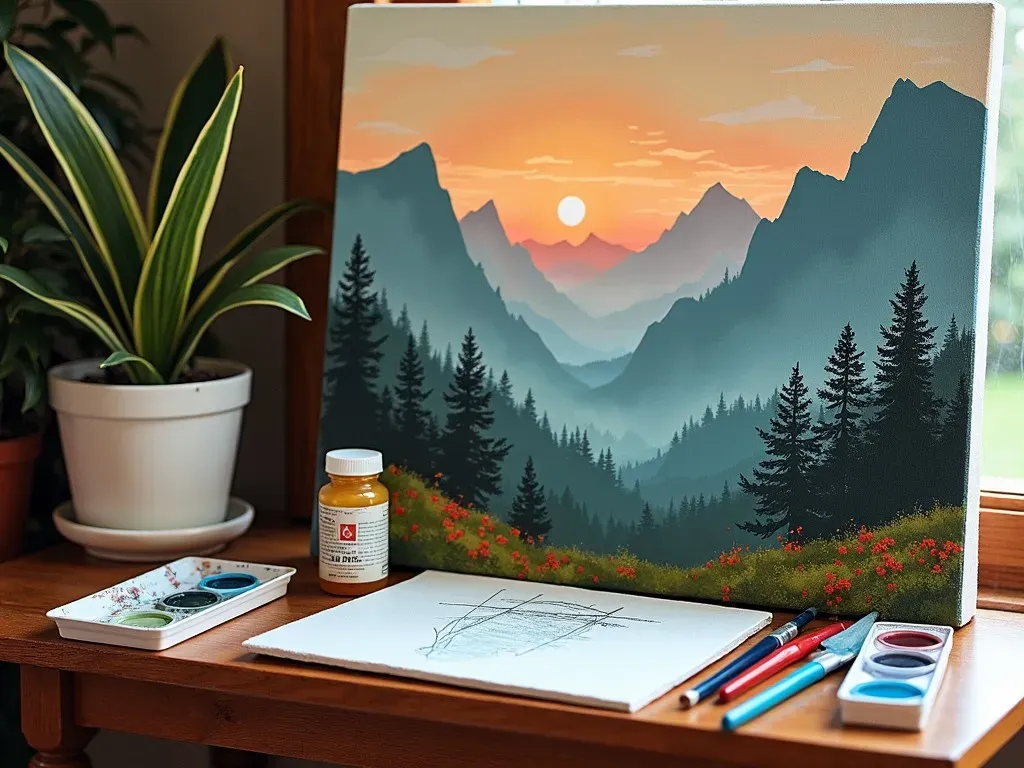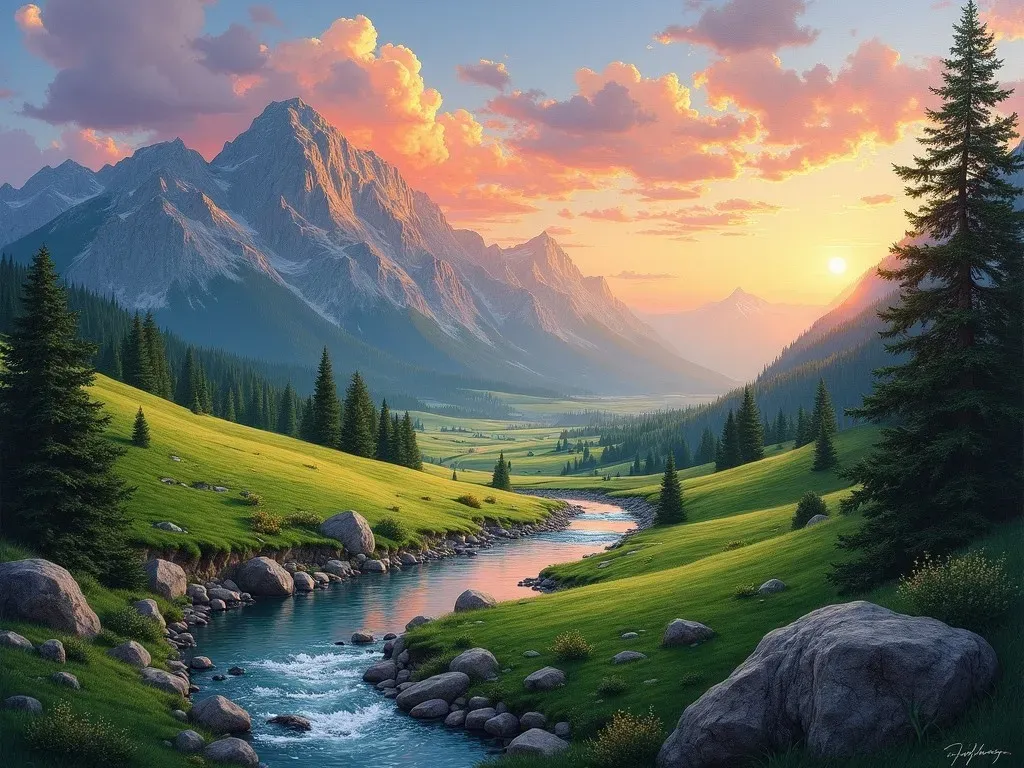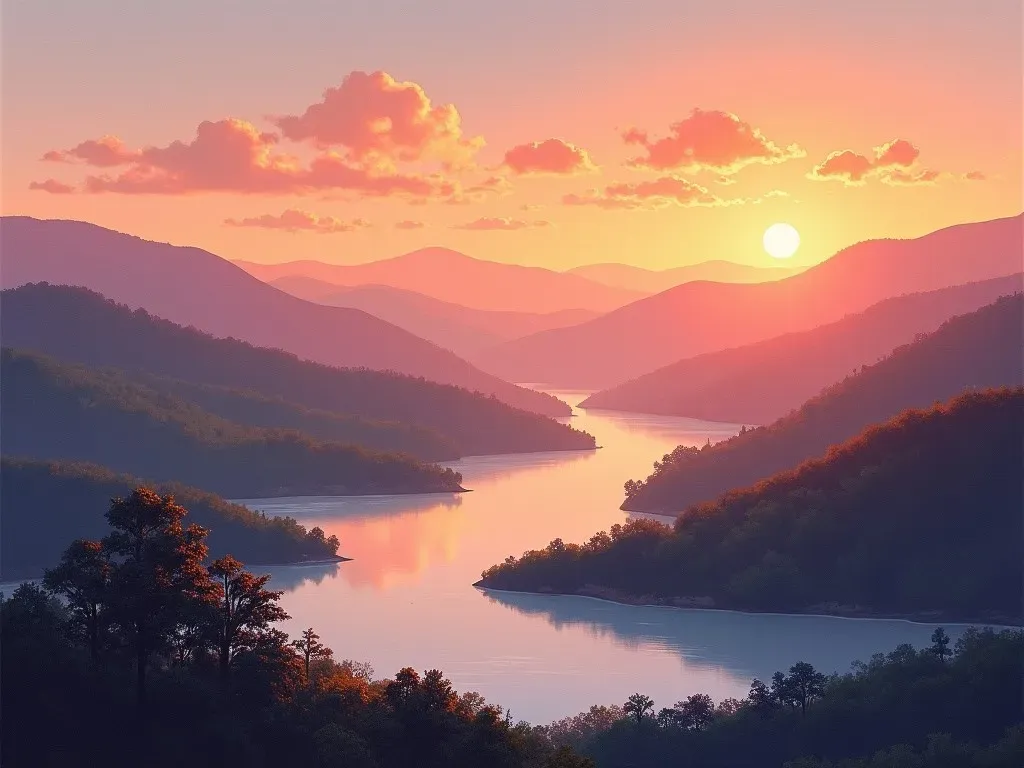Landscape painting tutorial: This guide provides a step-by-step breakdown for aspiring artists looking to create stunning landscape artworks. Whether you’re a novice or a budding Picasso, this tutorial will equip you with the essential skills and Techniques needed to bring your landscape visions to life.
Understanding Landscape Painting
Landscape painting is a genre that represents natural scenery, capturing the beauty of forests, mountains, rivers, and skies. It is not just about showcasing nature; it’s about interpreting it through brushstrokes, color choices, and composition. In fact, studies show that engaging with nature through art can enhance mental well-being and creativity.
| Benefit of Landscape Painting | Description |
|---|---|
| Mental Relaxation | Reduces stress and fosters mindfulness. |
| Enhanced Creativity | Encourages unique interpretations of natural scenes. |
| Skill Development | Improves basic painting techniques and artistic skills. |
| Connection with Nature | Fosters appreciation for the environment. |
Materials You Will Need
Before diving into the actual painting, it’s important to gather the right tools. Here’s a list of essential materials for your landscape painting journey:
- Canvas or Paper: Choose either stretched canvas or heavy-weight paper designed for acrylic or oil painting.
- Paints: Acrylics or oils; each has unique qualities. Acrylics dry faster, while oils offer longer blending times.
- Brushes: A variety of shapes and sizes, including flat, round, and fan brushes.
- Palette: For mixing colors, a wooden or disposable palette will work well.
- Easel: Provides stability and comfort while painting.
- Water Container: Essential for acrylics and cleaning brushes.
- Rags or Paper Towels: For wipe-downs and quick clean-ups.

Reference Video
Step-by-Step Landscape Painting Process
Step 1: Choose Your Scene
Selecting the right reference for your landscape is crucial. It could be a photograph, a real view from a window, or an imagined scenery.
Step 2: Sketch the Outline
Use a light pencil to create a basic sketch of your landscape on the canvas. Focus on key elements such as the horizon line, placement of trees, mountains, or water.
Step 3: Establish the Sky
Start with the sky as it sets the mood for your painting.
- Colors: Choose shades of blue for a clear sky or warm tones for a sunset.
- Technique: Use a large brush to blend your chosen colors smoothly.
Step 4: Add Land Elements
Now, transition to the land portion by painting larger areas first.
- Mountains or Hills: Begin with darker shades and add lighter hues to create depth.
- Forests or Trees: Use a fan brush to create the texture of leaves and branches.
Step 5: Introducing Water
If your landscape includes water, it’s vital to mirror the colors of the sky above to maintain a cohesive look.
- Technique: Use horizontal brush strokes and blend in light reflections.
Step 6: Add Detail and Texture
This final step is where your landscape truly comes to life.
- Details: Bring in smaller brushes for fine detail, such as grass blades, flowers, and animal life.
- Texture: Mix different mediums, like glazing or impasto, to generate texture on canvas.

Tips for Beginners
- Practice Regularly: Consistency will improve your technique and confidence.
- Experiment: Don’t hesitate to try different styles and materials.
- Learn Color Theory: Understanding how colors interact will greatly enhance your landscapes.
- Study Famous Landscape Arts: Analyze works by artists such as claude monet and Vincent van Gogh for Inspiration and techniques.
Common Mistakes to Avoid
- Overworking the Canvas: Resist the urge to work a section excessively; that can muddy your colors.
- Ignoring Composition: A well-balanced composition is critical for an impactful landscape.
FAQ
What type of paint is best for landscape painting?
Acrylic paint is ideal for beginners due to its quick drying time and ease of use. However, oil paints are also spectacular for landscapes as they allow for richer textures and blending.
How do I achieve depth in my landscape painting?
Layer your colors and use darker hues in the foreground, gradually lightening them as you move to the background. This gradient mimics natural light and depth.
Can I paint a landscape from a photograph?
Absolutely! Many artists begin this way. Just ensure you’re capturing the essence and mood rather than trying to replicate the photo exactly.
Where can I find resources for learning landscape painting?
You can check out Will Kemp Art School for video tutorials and structured learning paths in landscape painting.
How can I improve my landscape painting skills?
Engaging in timed sketching, practicing outside (plein air painting), and studying color theory can all contribute significantly to improving your skills.
Final Thoughts on Landscape Painting
Embarking on the journey of landscape painting can be incredibly rewarding. Embrace the process, customize your technique, and, most importantly, enjoy the expression of creativity through landscapes that resonate with your personal vision. Happy painting!

